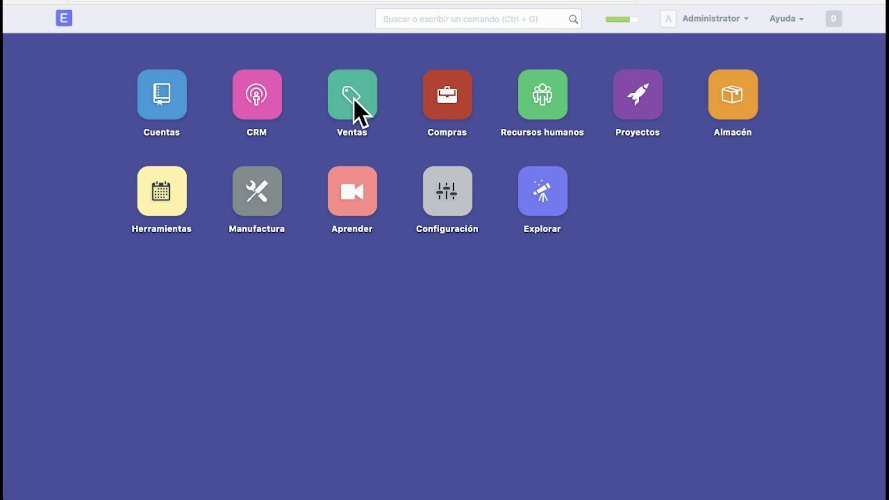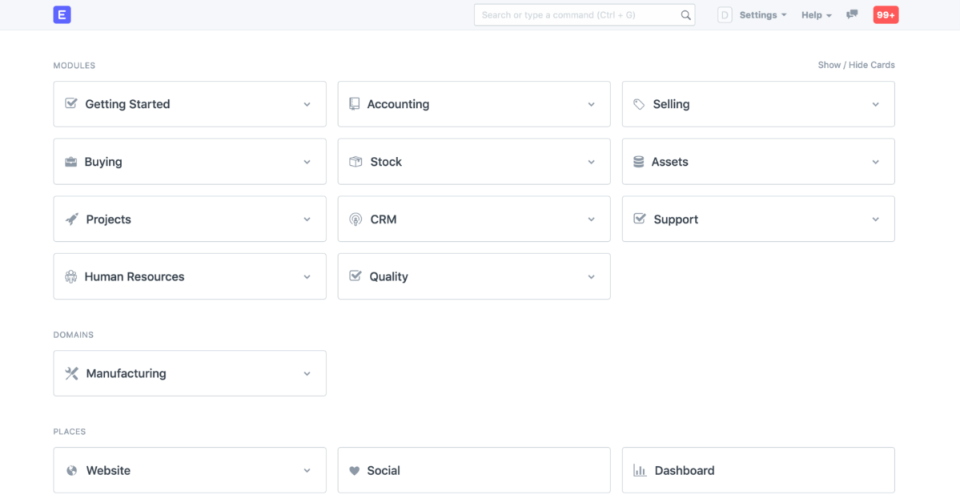Did you know that according to recent studies about 85% of large companies and 55% of small and medium enterprises have some type of ERP solution, since currently all organizations are oriented towards:
Increase productivity: Streamlining internal processes by adopting software to make their processes more effective, integrating the solutions of companies so that they talk to each other.
Reduce Costs: establishing processes that reduce man hours of work, in order to make the most of the time. Improve efficiency and effectiveness: implementing web software for business automation.
This is possible through the implementation of ERP, which simplifies the execution of activities quickly, easily and flexibly.
What is an ERP
The acronym ERP means "Enterprise Resource Planning", or also called enterprise resource planning system, these are not more than systems that integrate the different departments within an organization, they are one of the fundamental pieces, since within it we can manage all matters relating to administration, purchases, sales, payments, payroll among others.
The EPR is in charge of managing and controlling the resources, processes and operations within the organization, automating many of the operational and productive activities.
It is important to keep in mind that not all ERPs are the same. Depending on the size of the company and the work area, they will need one type of ERP software or another.
Importance of ERP in organizations
- Optimize processes within the organization.
- Improve the process of access to information.
- Eliminate data redundancy.
- Streamline administrative operations within the organization.
- Improve the processes for decision making.
- They control the payments, payrolls and inventories existing within the organization.
- Improve internal communication.
- Automate tasks.

Types of ERP according to their design
The types of ERPs that are listed can be applied in joint categories
OpenSource: They are open source, they do not generate payments for the use of them, they can make modifications to their codes, they can be developed collaboratively and their results are published.
Customized: These are systems developed specifically for an organization where it will fulfill specific functions and activities, these can be developed on any platform, provided that it meets the needs requested, in this type of development it is necessary to validate the costs generated by the development of the software.
Pre-defined / Pre-made: These are more economical systems to be implemented, because a large part of their modules are already developed and allow only the modules required by the organization to be implemented.
In the cloud: The biggest advantage of this type of ERP is that being hosted in the cloud can be accessed from anywhere at any time, without the need to be physically in the organization, another highlight is the cost of the services since they are lower than the traditional software models, the updates are made online and are inherited by all users of the organization, you can have the number of users required by the organization without generating extra costs.
Premises: These are stored in structures within the organization, can not be accessed from another location, the startup cost is high, since the software, servers, equipment, networks and infrastructure necessary to operate the solution, updates of systems must be made to each of the users and each of the computers on which the software is run.
Let's talk about ERPNext
It is an open source ERP system with a public license, with the ability to adjust to organizations of different sizes because it is configurable, and has a variety of modules such as:
Modules that ERPNext has (as of February 2018)
- Accounting
- CRM (Customer Relationship Management)
- Inventory management
- Sales - Purchases
- Projects
- Human Resources
- Nominees
- Others

One of its main features is that it is highly customizable and extensible, you can create custom forms as well as create your own applications to extend the ERPNext functionality.
This ERP manages a configuration wizard through which all the products, clients, suppliers and modules are created, in the same way ERPNext allows you to see the relationship that exists between the different modules, since from a purchase order you can go directly to the generation of an account receivable.
Among the main modules we can mention:
- Sales: in this module, the user will be able to follow up on the sales to be made as soon as it is initialized in the quotation, later the purchase order is generated until the invoicing is reached, it allows creating alerts through emails of the quotes made.
- Purchases: Through this module you can make requests for material purchases and automatically send requests to suppliers, this can vary according to the established configuration. When you create a purchase request automatically, a list of orders to be invoiced is created.
- Accounts Receivable: these are generated automatically when you create the invoices, when generating the invoice the deadlines are created and to the east be automatically surpassed they send emails both to the client and to the collection department where the expiration alerts are given.
- Human Resources: in this module you will be able to load all the information of your collaborators, discounts of law, discounts for faults or for loans, at the time of loading the monina it must be validated and automatically the proof of payment reaches all the collaborators.
- Accounts Payable: this module shows the invoices that the company has yet to pay, these are generated from the purchase module, the same as the general payment is recorded and canceled thereby lowering my accounts payable.

ERPNext features
- It is flexible and adaptable to any type of company. - It is built primarily with Python / Javascript / Node JS / Redis, with its own framework called Frappe, uses database: Mariadb. - It has its own consumable API - All the code is editable - Only the modules that are needed can be adopted. - Handles quality standards. - It is completely free. - It is open source. - It has its mobile Application. - It is multilanguage.
Advantages and disadvantages
Advantage
- It will have a centralized database.
- It allows to optimize the processes within the organization.
- Because of its flexibility, it can interact with other systems.
- It allows to standardize the processes within the organization.
- Improve the decision-making process.
- It allows planning the structured growth of the organization.
- By having your mobile application, you are free to upload or validate information at any time and at any time.
- It allows to maintain a constant communication between the clients and the suppliers.
- The information that is consulted is in real time and is absolutely reliable.
- Eliminates duplication of data.
- Does not pay license costs.
- Allows you to perform a data migration from your current system.
- Because it is open source, its download is free, but the software support has a cost.
- It allows creating the different user roles according to the functions within the organization.
Disadvantages
- The effectiveness of the system depends on the correct feeding of the data by the different users.
- Because it is open source, it is difficult to convince the accounting and human resources departments.
- Being web and having to stick directly to external devices, such as fiscal printers, you have to make a custom integration with a desktop software.
Conclusions
In general terms we can say that ERPNext is a very complete ERP because of the flexibility it offers users both to be modified and to be linked with other systems of the organization, just as it can be accessed from their mobile application, the organization maintains communicated with all departments, allows creating roles for each user where the same is responsible for carrying out assigned activities, is friendly, economical and easy to use, for all these characteristics we can recommend to organizations the evaluation to implement this administrative system .
We recommend you on video:
